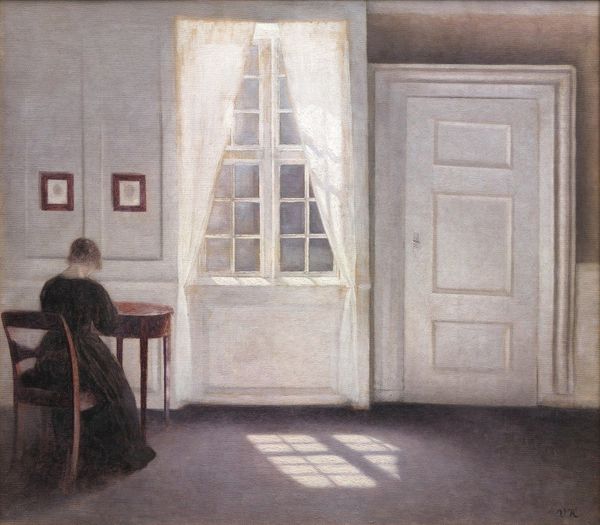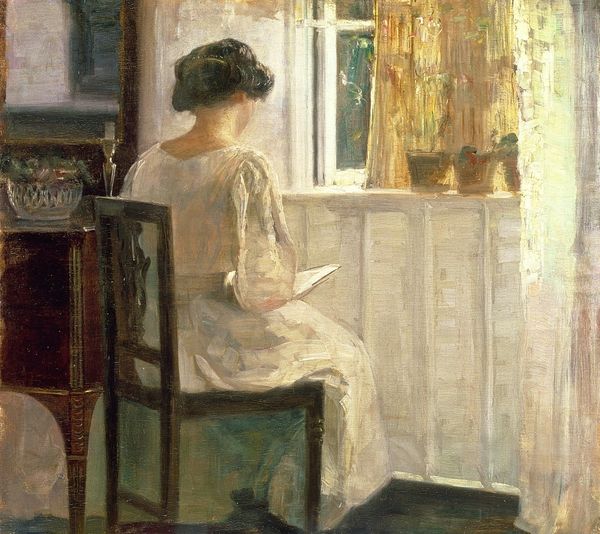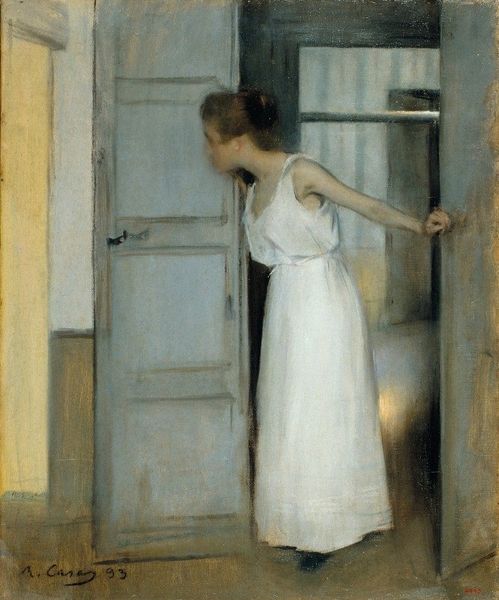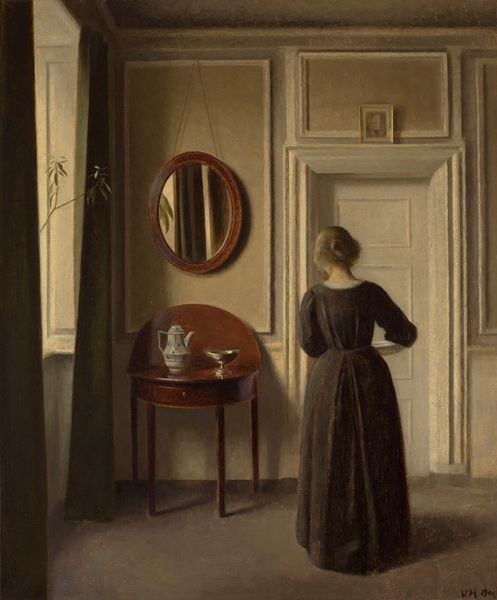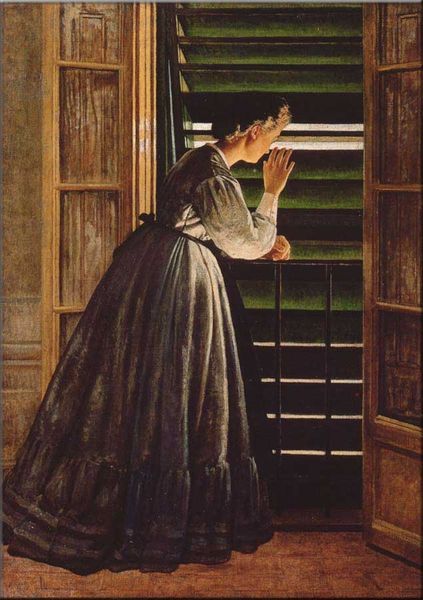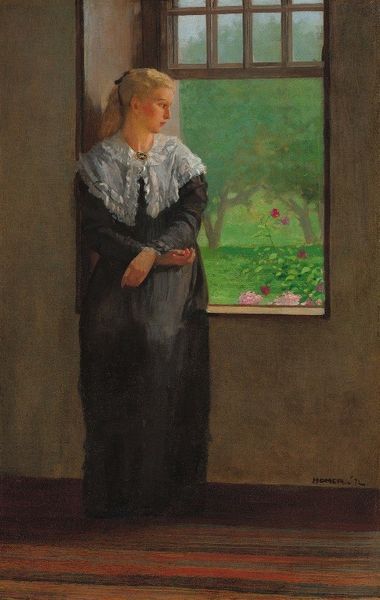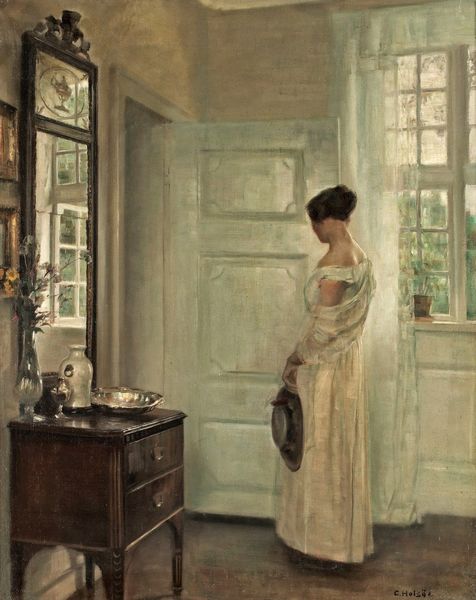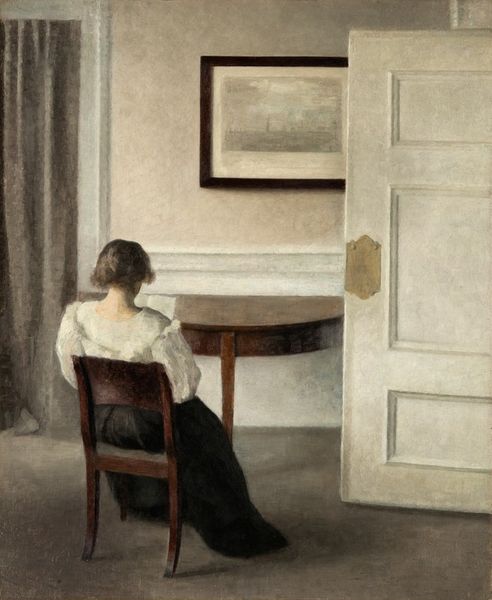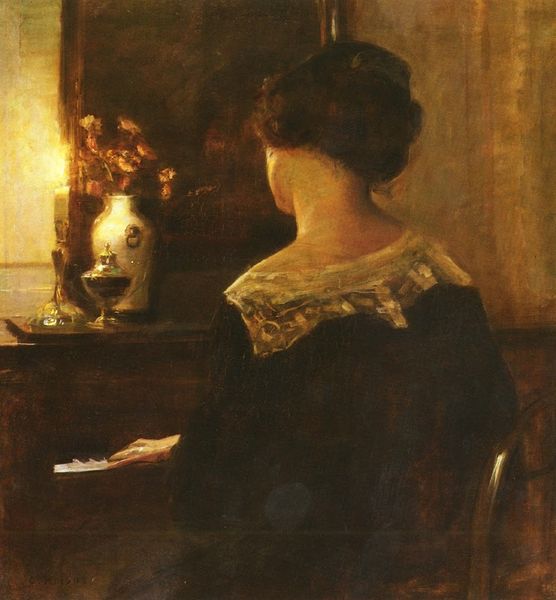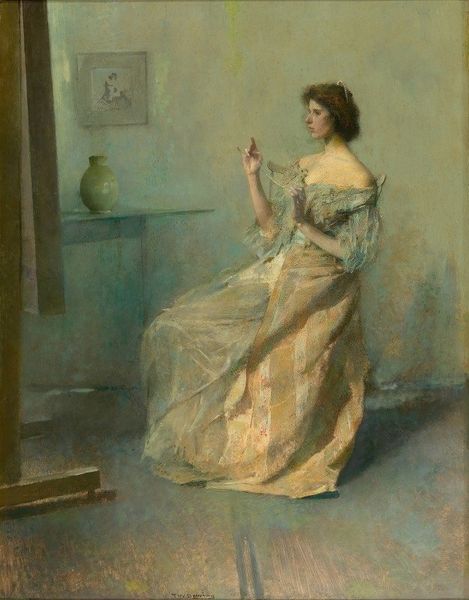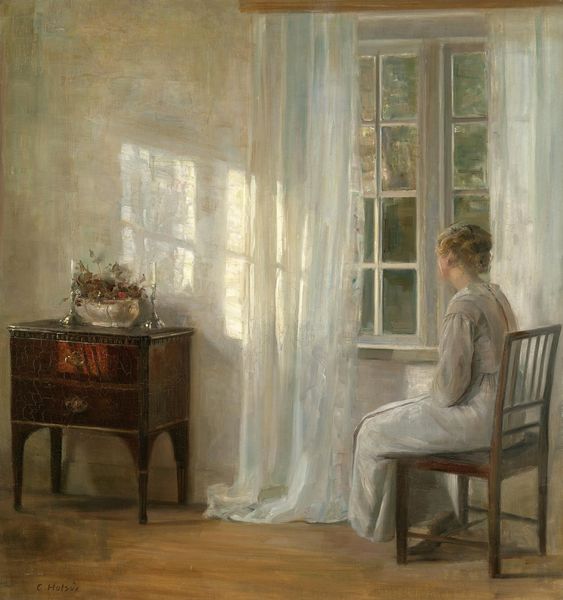
painting, oil-paint
#
portrait
#
painting
#
painting
#
oil-paint
#
landscape
#
perspective
#
oil painting
#
romanticism
#
cityscape
#
history-painting
Copyright: Public domain
Editor: So here we have Caspar David Friedrich’s "Woman at a Window," painted in 1822. It’s an oil painting, and the woman is standing with her back to us, gazing out. I’m struck by the sort of… claustrophobic feeling. What do you see in this piece? Curator: I see a careful negotiation between interior and exterior, examining the social and economic forces at play. Consider the materials. The oil paint itself – where did Friedrich source it? How was it processed? Pigments at the time reflected a growing industrialization. This is not just "a woman," but labor and materials interacting. Editor: That's interesting! I hadn't thought about the pigments themselves holding meaning. Does the style of dress indicate something about her class, and therefore, perhaps the labor she may have been involved in? Curator: Precisely. The dress, seemingly simple, speaks to a certain economic standing, access to particular textiles and manufacturing processes. Her gaze out the window onto ships, symbols of trade, further implicates her in the burgeoning capitalist system of the time. Even the making of the window relates to manufacturing, resources, trade routes… Editor: So, you're saying it's not just about Romanticism’s longing for nature but also about acknowledging how enmeshed people were, and *are*, with the materials around them and how they were produced. Curator: Absolutely! It challenges the boundaries. Where does “art” begin and the material world, shaped by labor, begin? Think also of who gets to depict women, in what setting, under what conditions… Whose stories are told, and through whose hands – those of laborers who made the paintbrushes for instance, or the artist. Editor: This has totally shifted my understanding. It’s no longer just a pretty scene but a commentary on the social conditions of artistic creation. Curator: Indeed, and it forces us to examine what and how artwork signifies—a process rooted firmly in materiality.
Comments
No comments
Be the first to comment and join the conversation on the ultimate creative platform.
